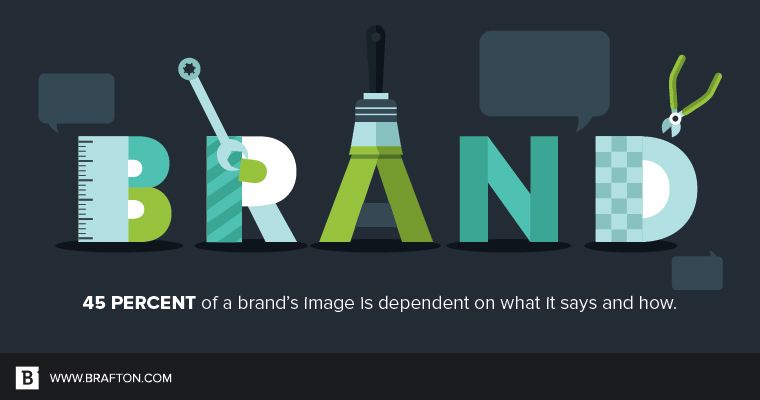Odds are you prove the benefit of brand awareness each time you step foot in the cereal aisle.
In one hand, Rice Krispies. In the other, Crispy Rice. Any difference in ingredients is negligible, if not nonexistent. What’s more, the latter is cheaper.
Even so, you opt for Snap, Crackle and Pop.
Why?
The cereals are the same, but the brand you know and trust just seems to taste better.
Boom. Another win for brand awareness.
Of course, it would be a different story if Kellogg’s wasn’t an expert at brand management. Making an impression on consumers is one thing, maintaining positive perception is another.

Brand management through content marketing
Opinions of your brand will fly fast and furious whether you shape them or not. People talk. Brand management is about taking an active role in the discussion and ensuring you earn the reputation you want.
It’s estimated 45 percent of a brand’s image is dependent on what it says and how. Content marketing plays an integral role, providing you the opportunity to hammer home your messaging consistently.
“Every piece of content you create, from landing pages to videos to email marketing, needs to have homogenous messaging,” said Jeff Baker, Director of Digital Marketing Strategy at Brafton. “You can best control market perception by controlling your own messaging. Every square inch of your website and social profiles should sing the same tune. A break in branding creates a lack of continuity, and with it, distrust.”
Just as important is the opportunity to humanize your brand. People like working with people, not faceless corporations.
“Content marketing can make a company approachable and trustworthy,” Jeff continued. “It can also do the opposite if it’s not done well. Take advantage of any content where there is an opportunity to humanize your brand. Mediums like blogs, emails and social media are ideal.”
Maintaining brand buzz
Social media is arguably the most important platform for modern brand management. If it seems like everyone and their mom has a social profile, it’s because they do. A third of the planet’s population is expected to be on a social network come 2020. Meanwhile, North America already has the highest global penetration rate of social networks, with approximately 66 percent of the population on social.
“With so many people utilizing and interacting on social, it’s the new marketplace for businesses to be recognized and find their customers,” said Walton Clark, Senior Social Media Strategist at Brafton. “It’s easier to scale and begin to use than other mediums, plus it features powerful analytics tracking to see how your content performs.”
It’s also how many people share their feelings about a brand, angry dissatisfaction included.
Fortunately, while bad word of mouth used to leave brands without immediate recourse, access to social media puts the ball in the business’s court.
“Social listening tools like Sprout Social help you manage your brand’s public relations, interacting with customer questions or problems,” Walton said. “The ability to directly communicate with customers is significantly more powerful than just throwing up an ad on a TV show. If you can create direct positive experiences with customers, you garner strong brand support and loyalty.”
In short, a customer with an axe to grind can be an opportunity for your brand management strategy to shine.
“Confront it head on,” Jeff said. “If someone speaks ill of you online, acknowledge their unhappiness and try to fix the issue. The last thing you should do is get defensive, or prideful. That just makes you look like a jerk. Studies have shown that customers who had an issue resolved think more fondly of a brand than those who never had an issue in the first place.”
Picking personas
Unless you’re a giant multi-national corporation, there’s a good chance you have a specific target audience in mind beyond just “the whole world.” When developing your content marketing strategy, keep this audience in mind. It should dictate everything from the type of content you create to how it’s distributed.
“Every piece of content has the potential to shape how you’re perceived,” Jeff said. “That means no ‘winging it,” or saying something is ‘good enough.’ If you’re going to create a brand persona, it needs to be comprehensive.”
Walton agreed, especially as it pertained to social media.
“Pick good platforms and play to your networks’ strengths,” he said. “LinkedIn calls for professional advice and thoughtful research. Instagram is stylized videos and images. Twitter is more in the moment, event-based. You have to have a strong sense of your brand and the audience you’re trying to reach. Only by knowing your audience can you create content that resonates.”
Be Rice Krispies, not Crispy Rice. Your business will thank you (along with breakfast snobs the world over).





